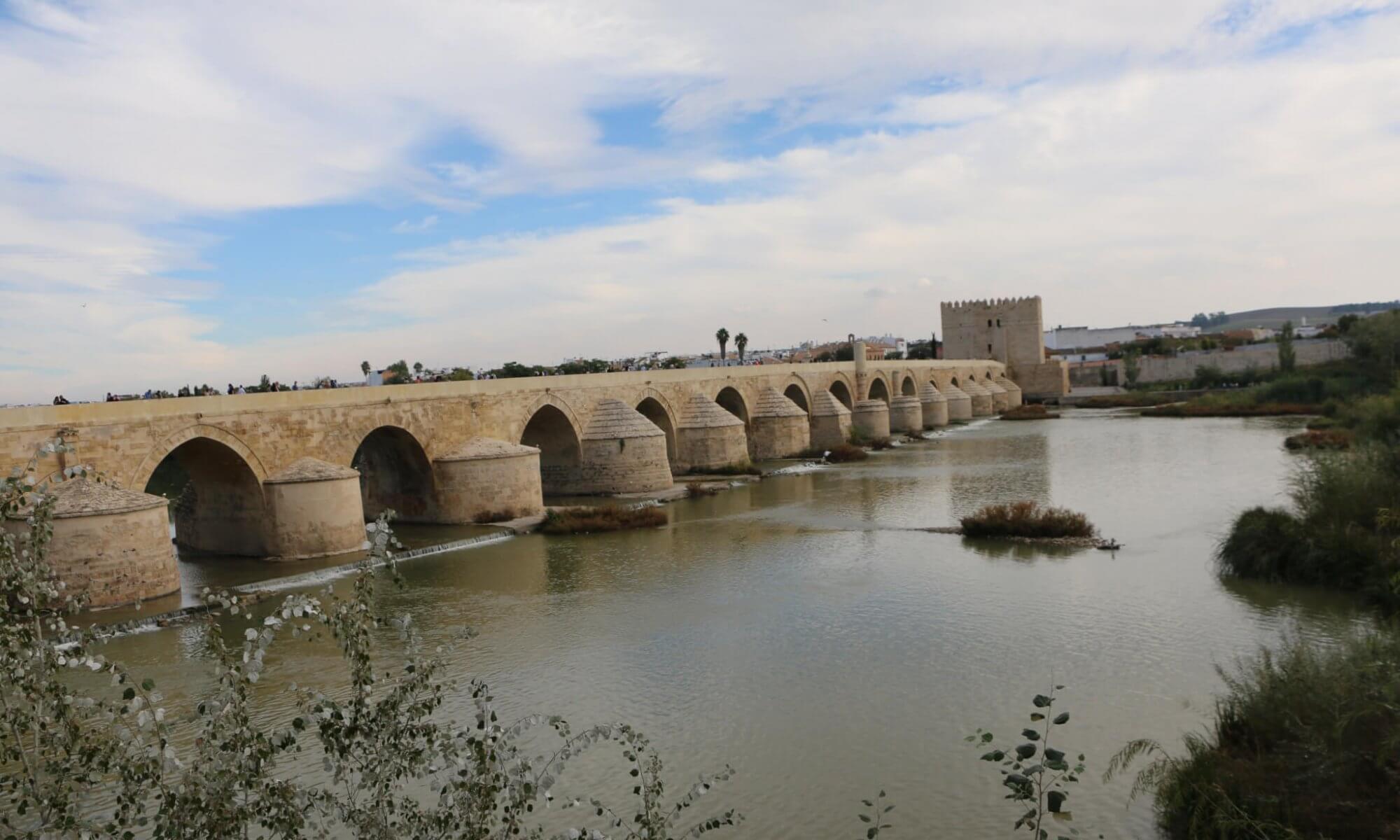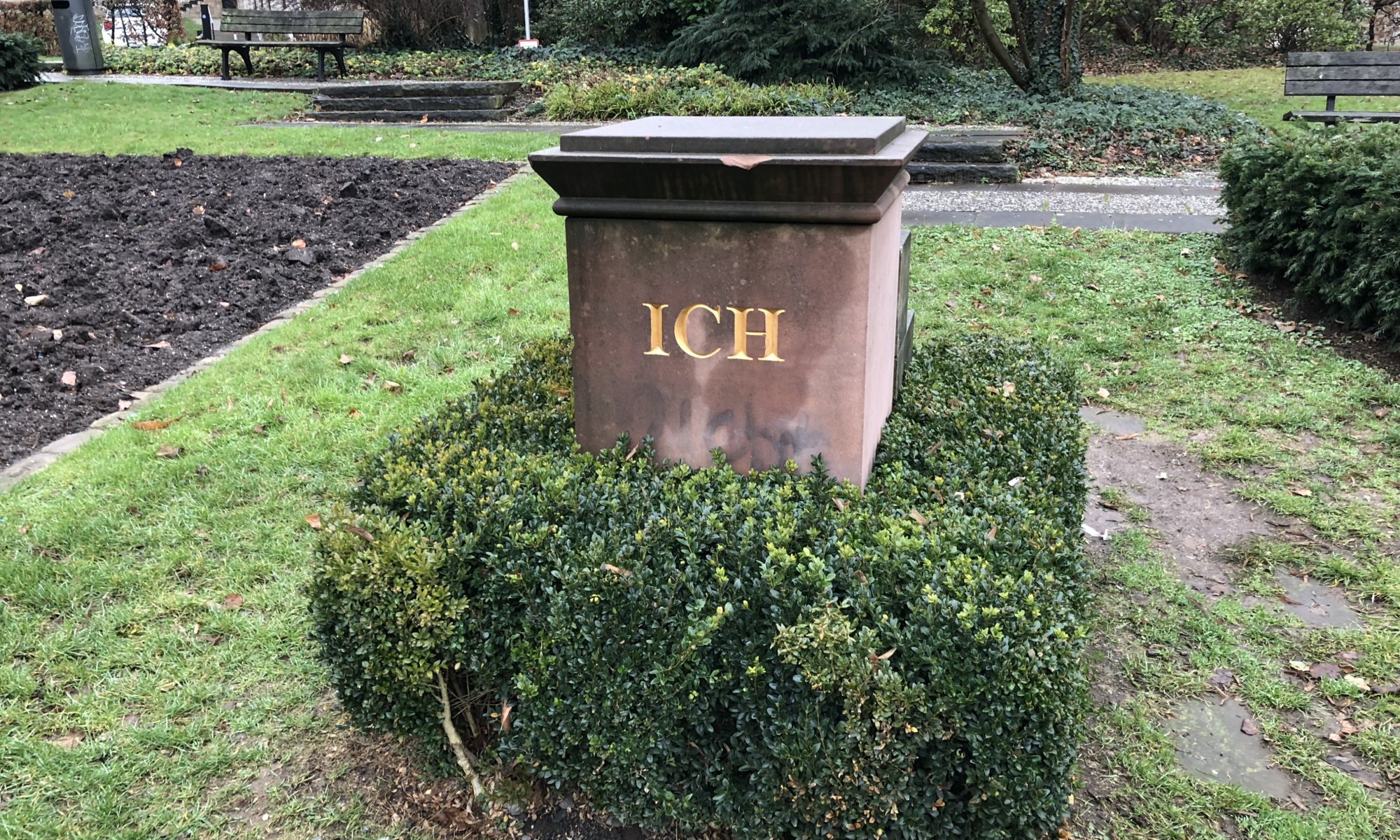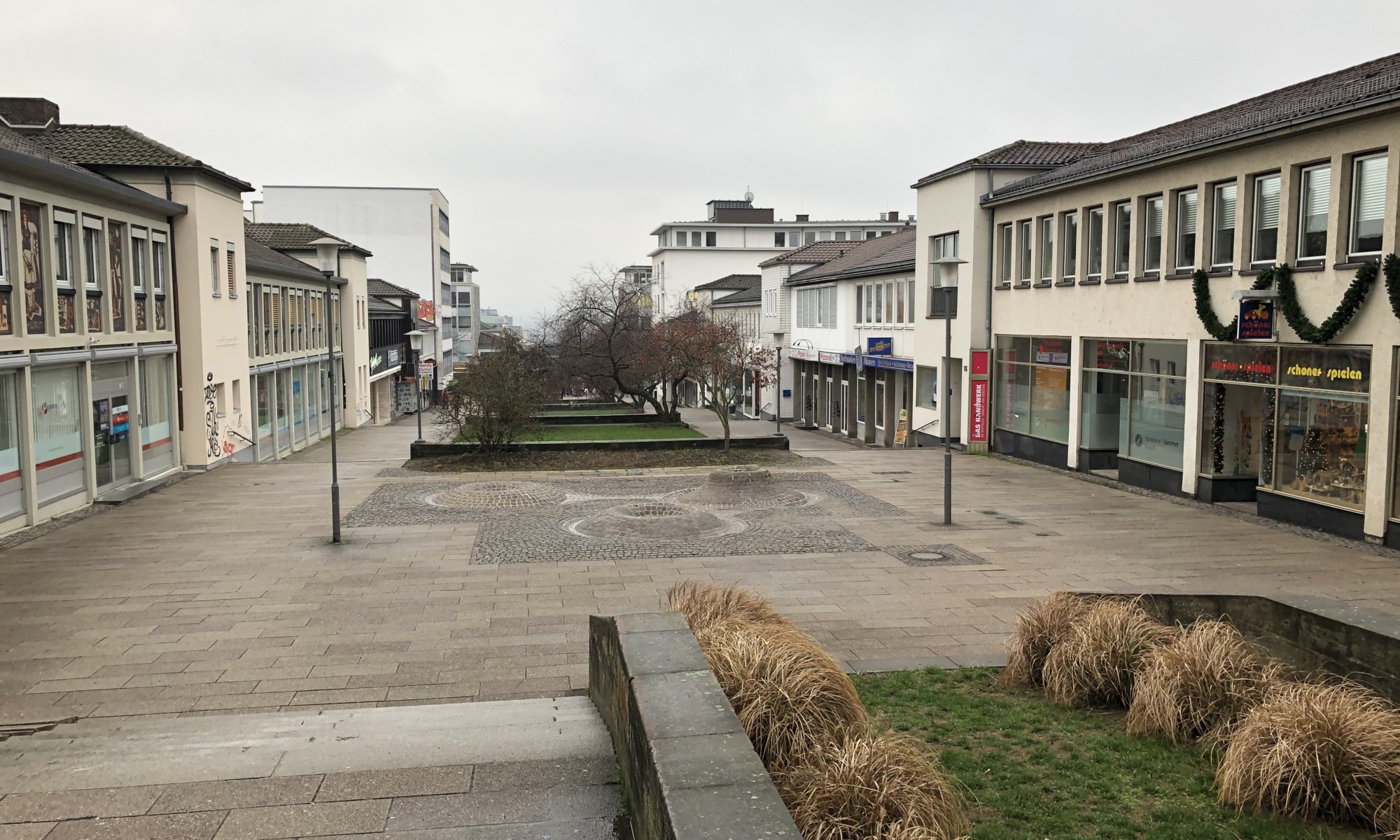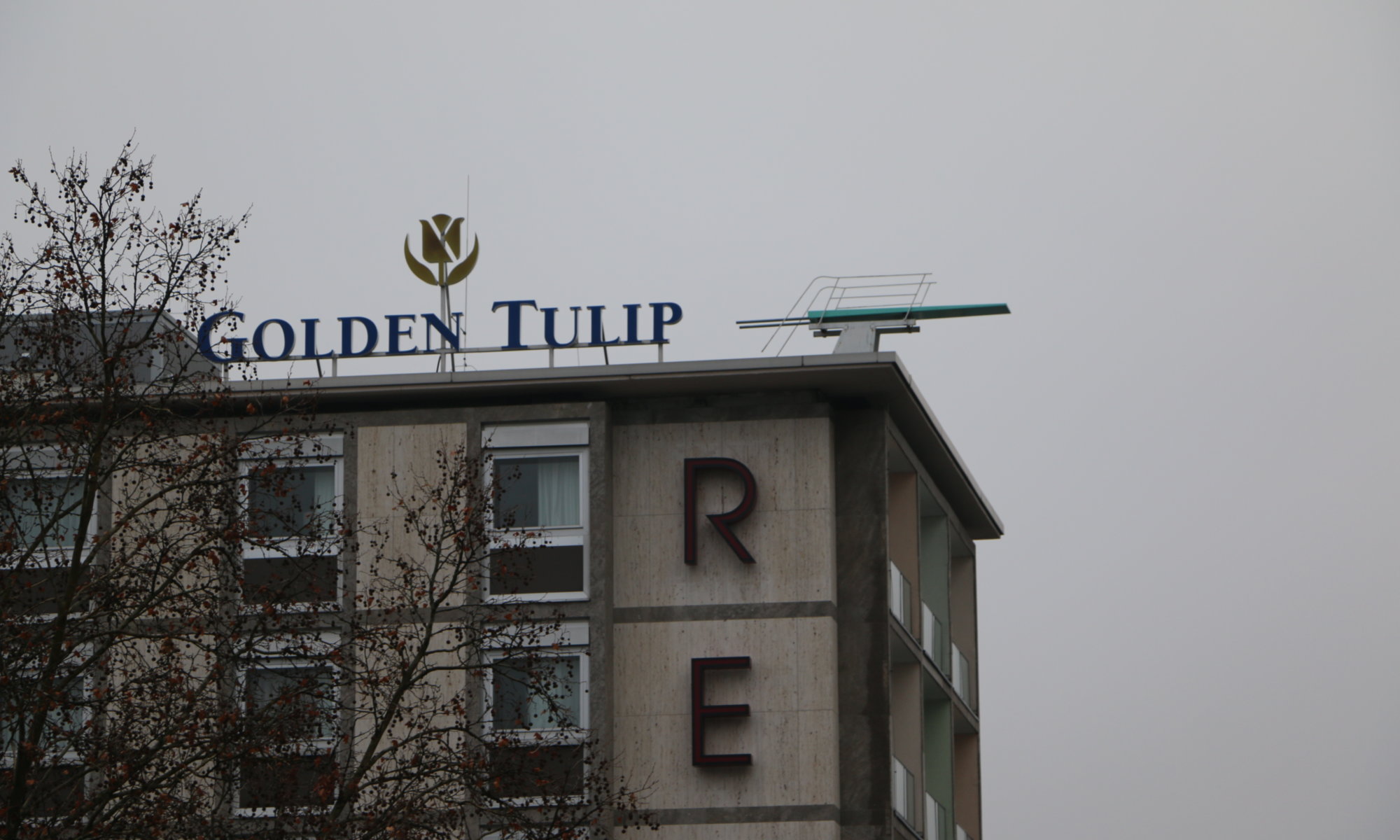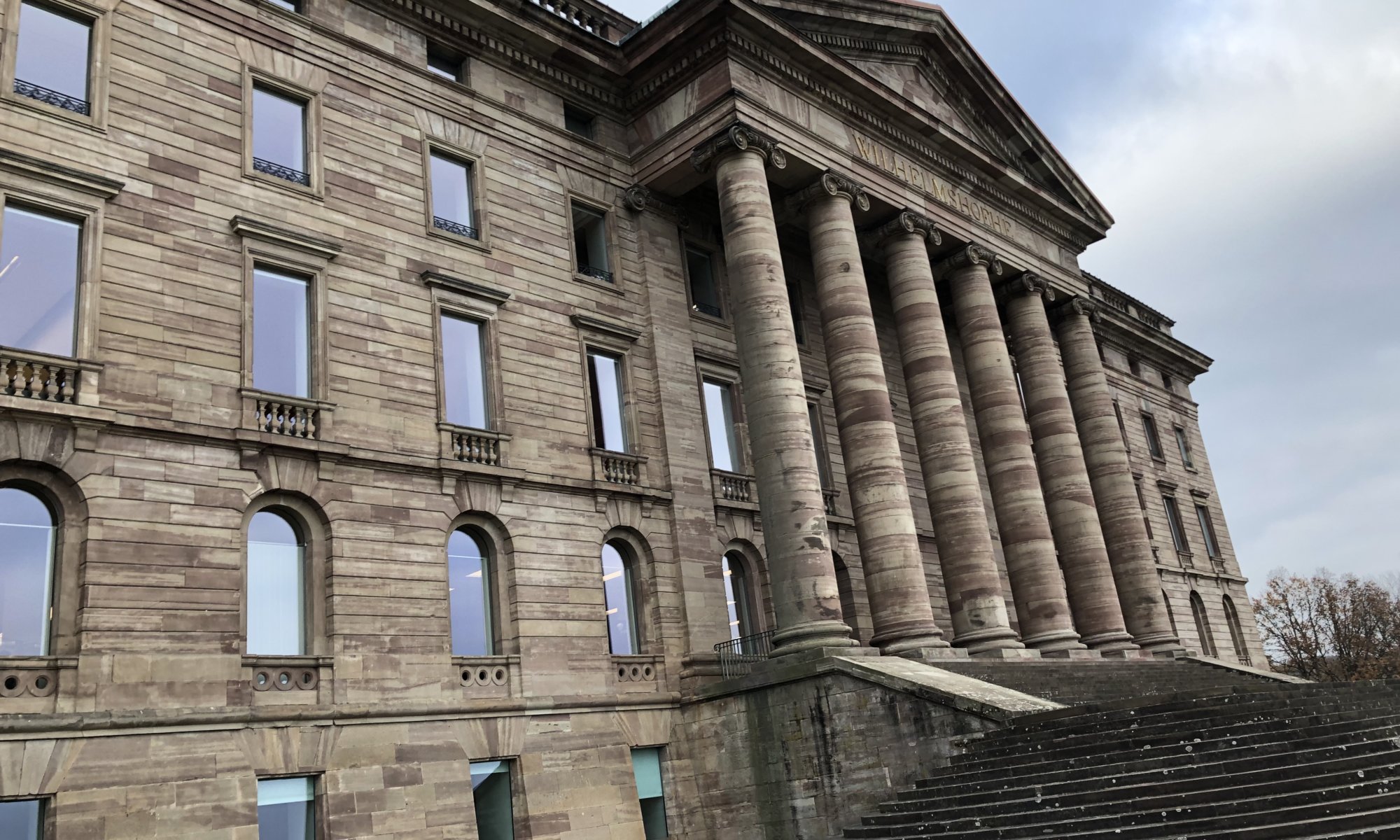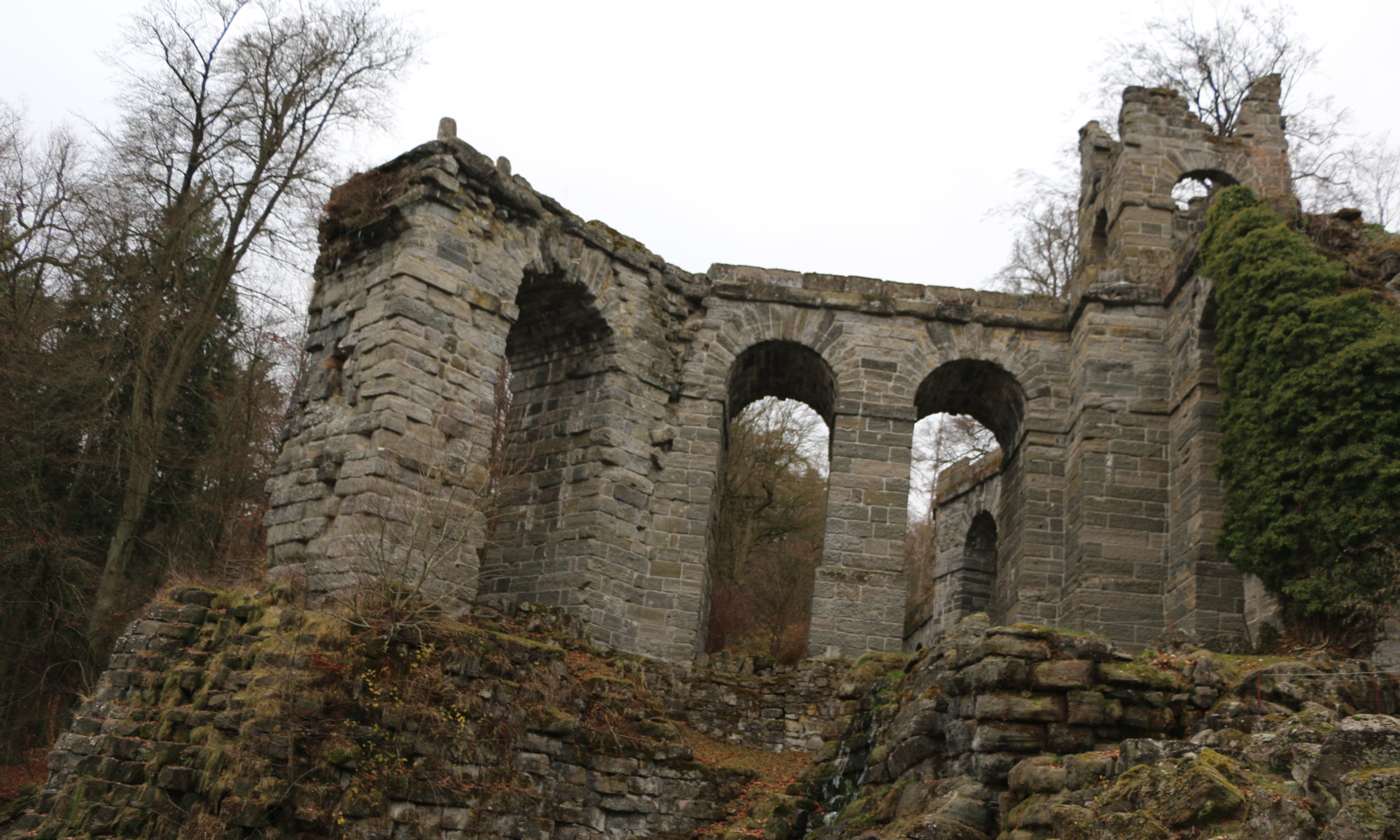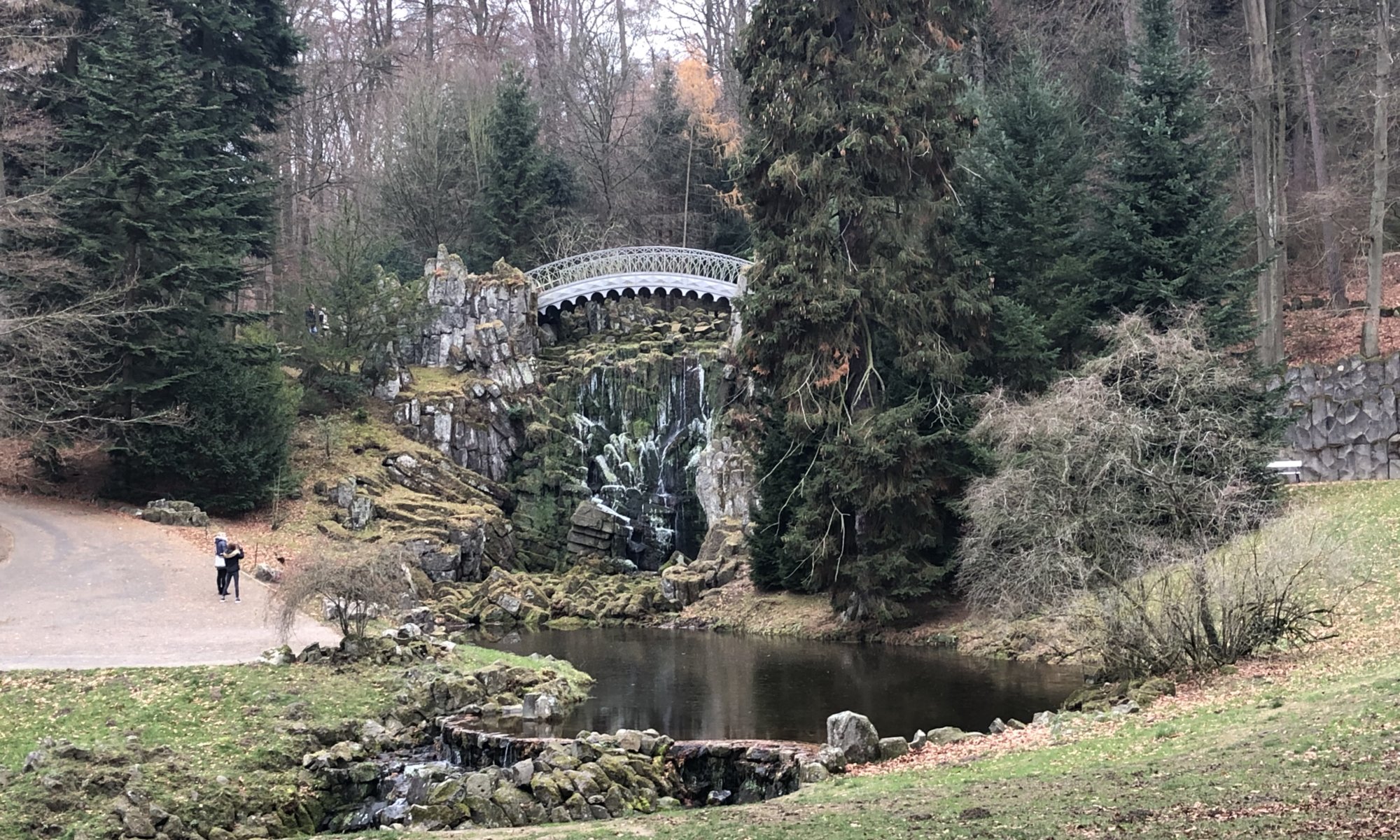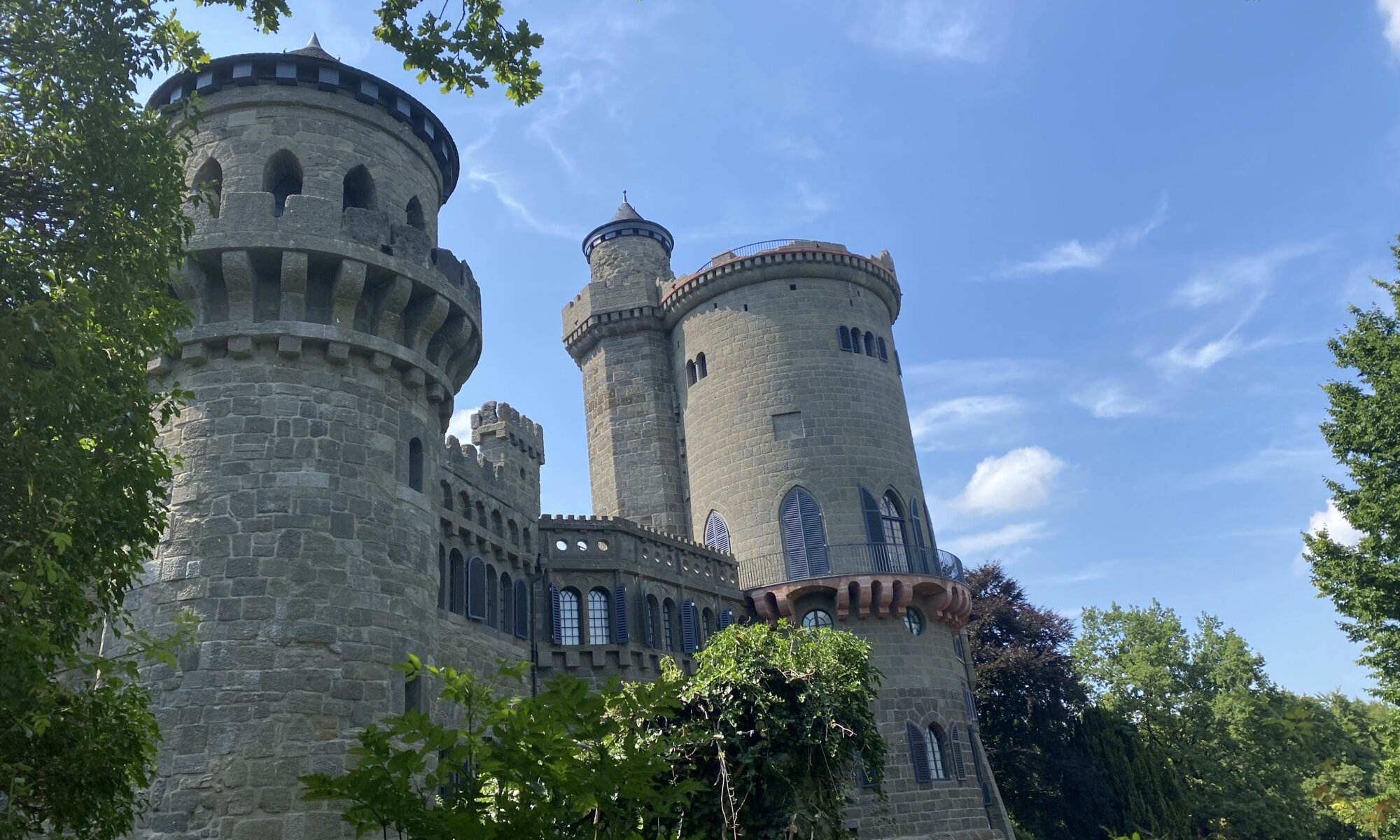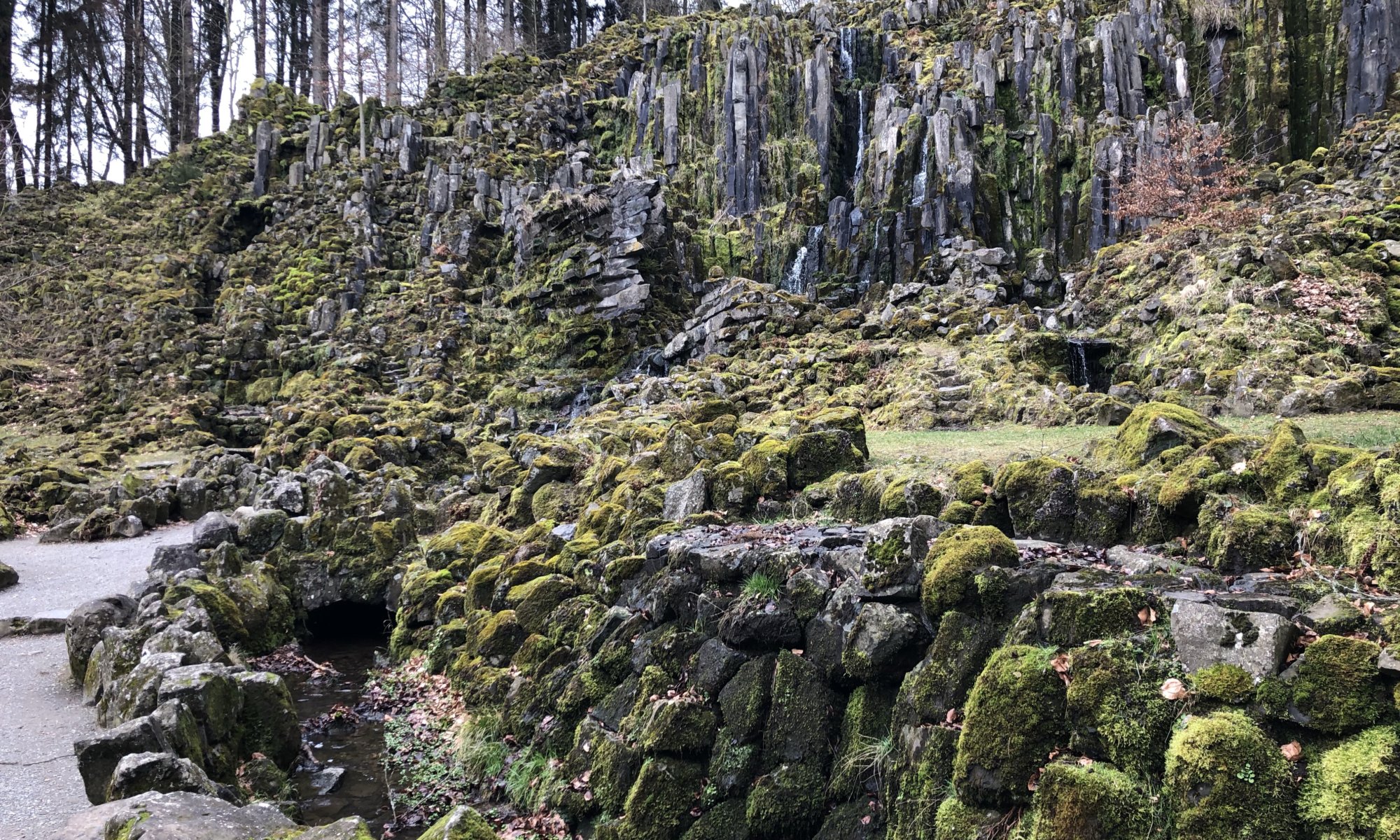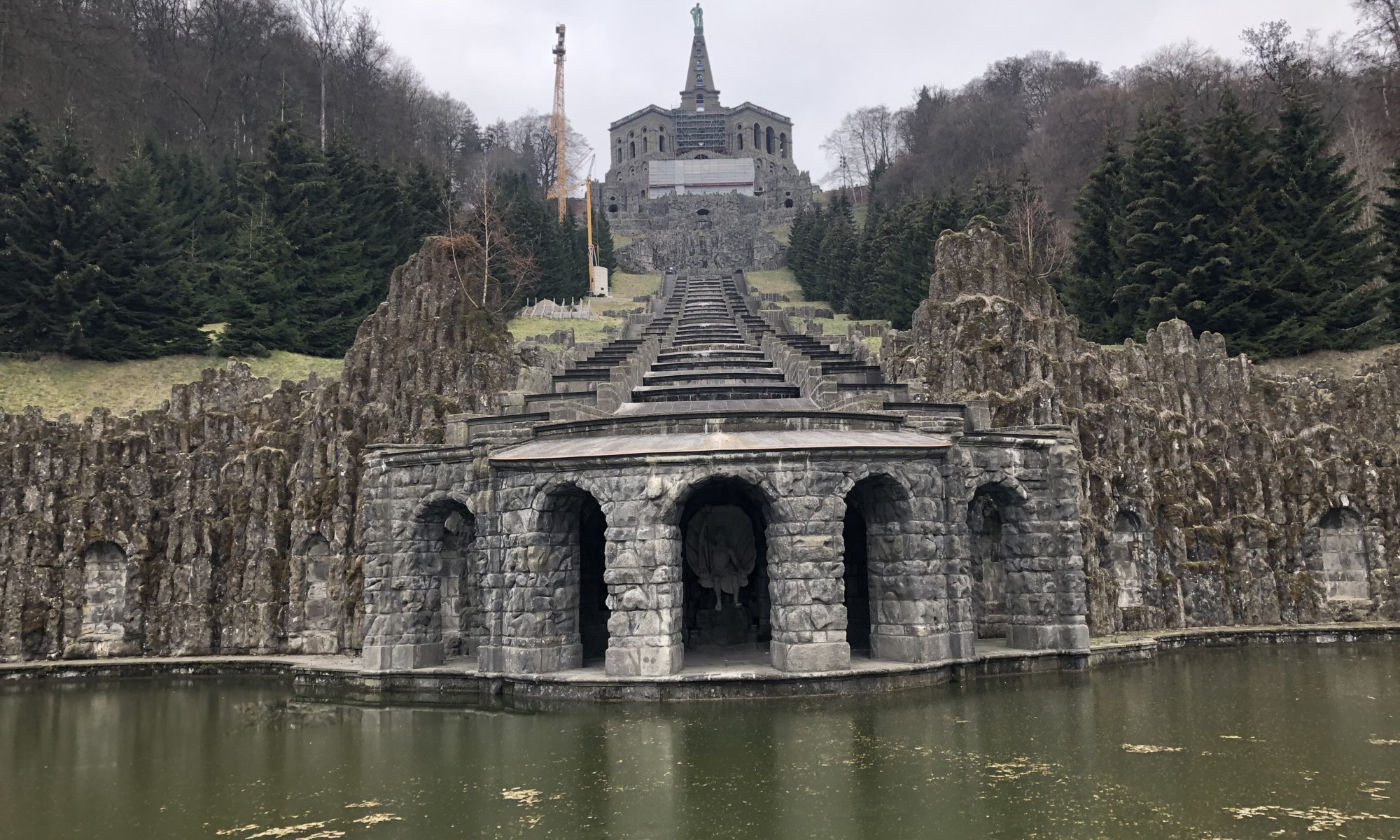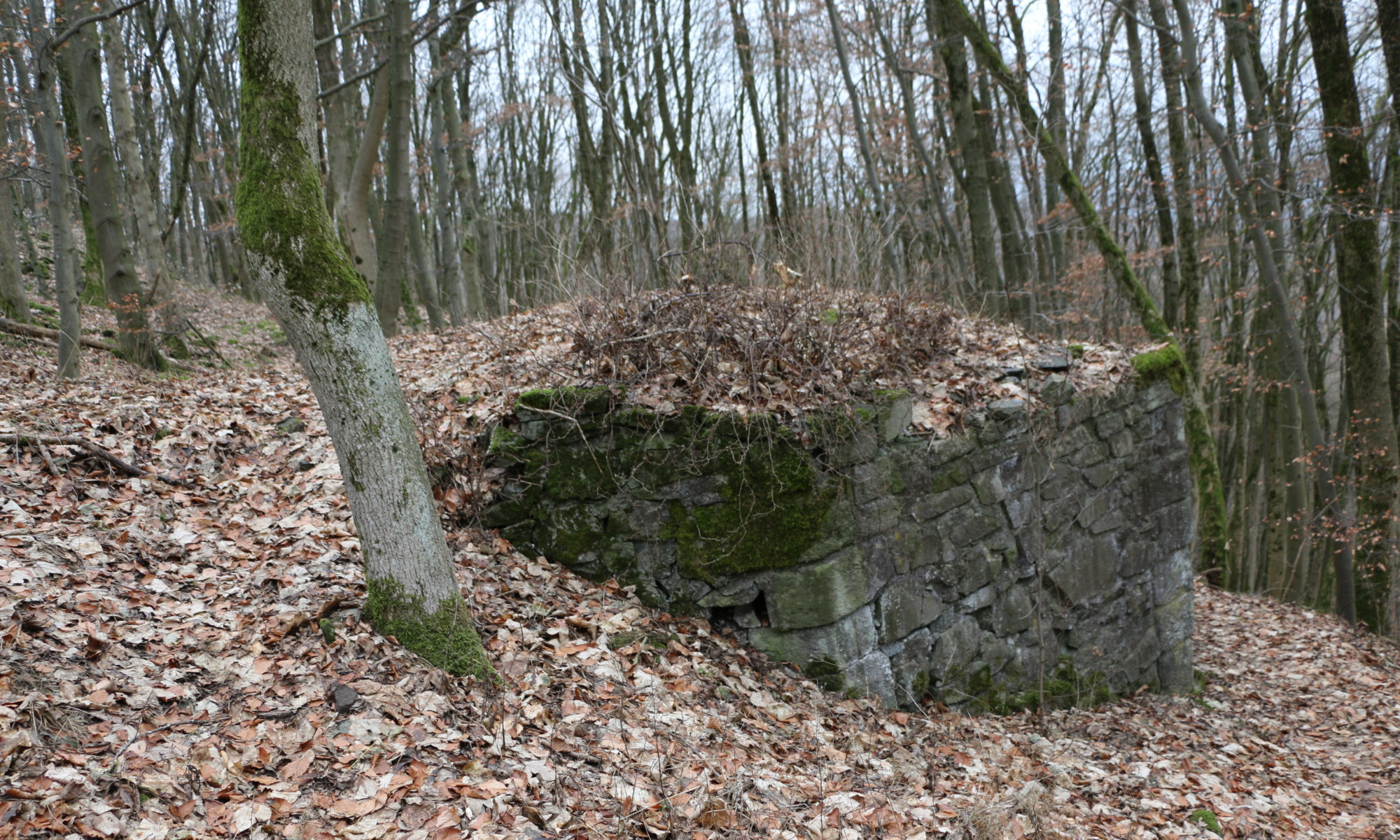Everyone is unique. And this is a memorial for everyone of us. At the Brüder-Grimm-Platz of Kassel, Germany near the city center you can find an apparently empty memorial made of sandstone with the letters ICH (‘ME‘). Via three steps on the reverse side you can climb on top and complete the artwork.
Continue reading “ICH-Denkmal”Treppenstraße
The Treppenstraße is seen as an historical highlight at Kassel, Germany – but the normal visitor wouldn’t recognize it. It is a street with steps and platforms that leads from the railway station to the main axis between Königsplatz and Friedrichsplatz in the city center. It is special because it is the first intentionally created pedestrian zone in Germany.
Continue reading “Treppenstraße”Arschbombe
It’s one of the most unexpected artworks at Kassel, Germany and even as it is close to the Kulturbahnhof many visitors simply don’t see it. Local artist Ralph Raabe built a springboard and placed it onto the Hotel Reiss. If you would use it, you would fall eighteen meters deep and hit the street underneath. It is called ‘Arschbombe‘ (cannonball) which describes the pleasure to jump into a pool with the goal to splash as much water as possible.
Continue reading “Arschbombe”Schloß Wilhelmshöhe
Schloß Wilhelmshöhe is a castle in neo-classical style located in the Bergpark Wilhelmshöhe at Kassel, Germany. It was built for William I between 1786 and 1789 on the grounds of a former cloister and houses today art museums – including the old masters gallery.
Continue reading “Schloß Wilhelmshöhe”
Aquädukt
In 1792 a new item was added to the water games in the Bergpark Wilhelmshöhe at Kassel, Germany: following plans of Heinrich Christoph Jussow (after whom the temple next to the great fountain is named) an aqueduct with 14 arches was built. At the end the water is falling down 43 meters into wreckage of the aqueduct. Continue reading “Aquädukt”
Teufelsbrücke
The Teufelsbrücke or devils bridge is a bent pedestrian bridge in the Bergpark Wilhelmshöhe at Kassel, Germany. It was first a wooden bridge that was replaced in 1826 by a metal one created by local company Hentschel. It is the third location of the water games and the water falls ten meters down into the Höllenteich (lake of hell). Continue reading “Teufelsbrücke”
Löwenburg
The Löwenburg (lions castle) is an artificial castle ruin within the Bergpark Wilhelmshöhe at Kassel, Germany. It was built in neo-Gothic style from 1793 on and was the private retreat and later burial place of William I, landgrave of Hesse-Kassel. Its original name was Felsenburg (cliff or rock castle).
Continue reading “Löwenburg”Steinhöfer Wasserfall
The Steinhöfer Wasserfall at Kassel, Germany is an artificial waterfall and the second element of the water games at the Bergpark Wilhelmshöhe – after the cascades underneath the Herkules monument. It was finished in 1793 following plans of Karl Friedrich Steinhofer.
Continue reading “Steinhöfer Wasserfall”Bergpark Wilhelmshöhe
The Bergpark Wilhelmshöhe is a 2.4 square kilometers large vast landscape garden at a mountain belonging to the Habichtswald. It is located at the city quarter Wilhelmshöhe of Kassel, Germany. The Bergpark is designed in the style of an English landscape garden with baroque and neo-classical elements. It is especially famous for its water games that use 200 to 300 years old techniques and work without electricity.
Continue reading “Bergpark Wilhelmshöhe”